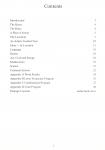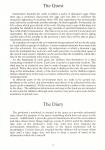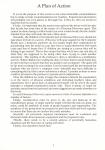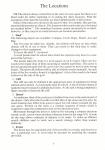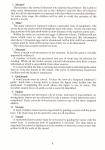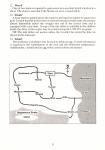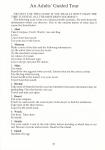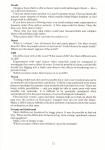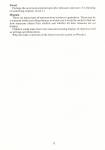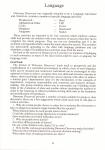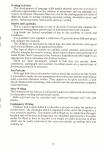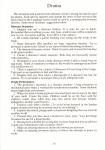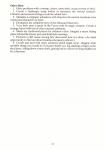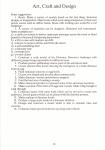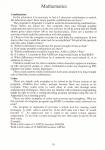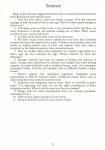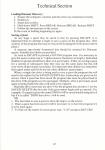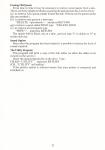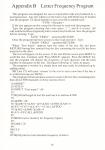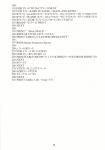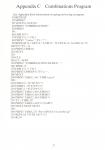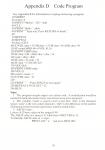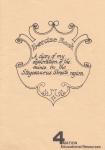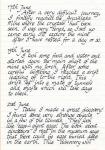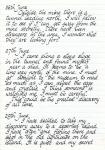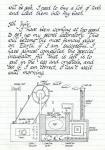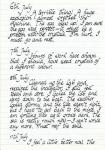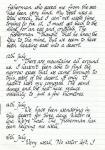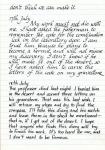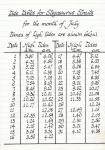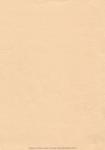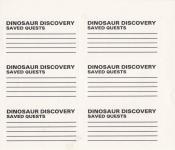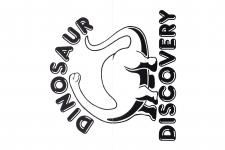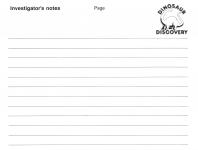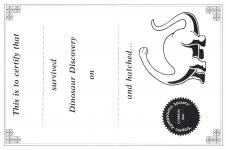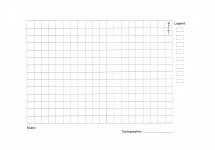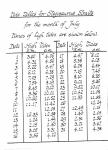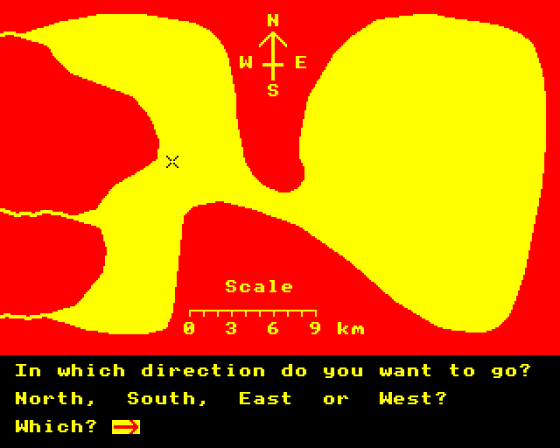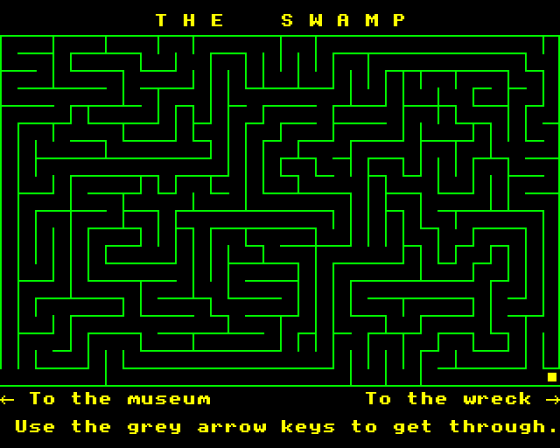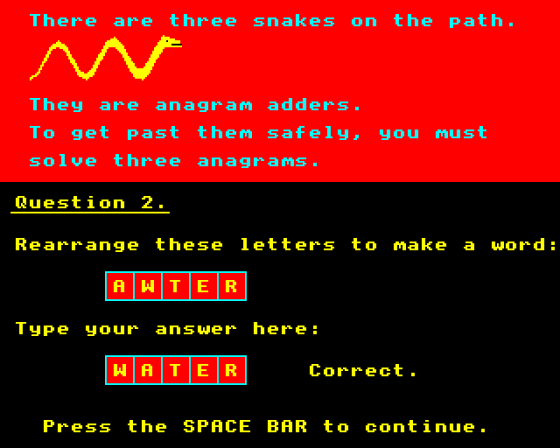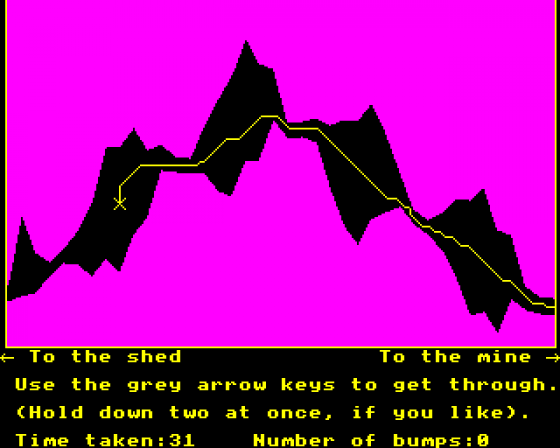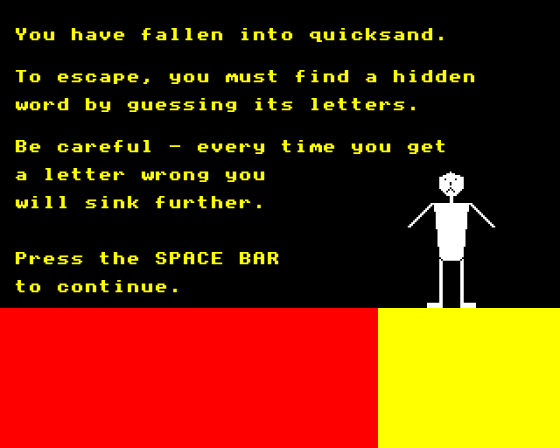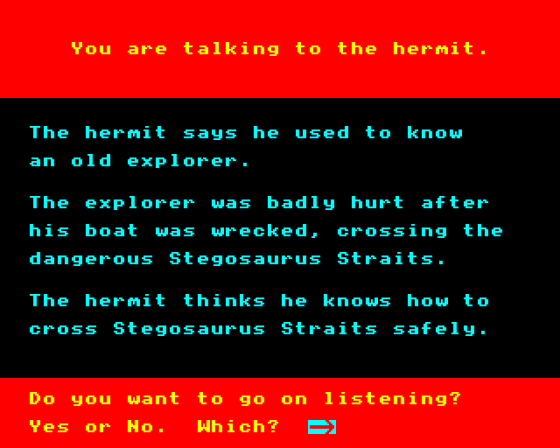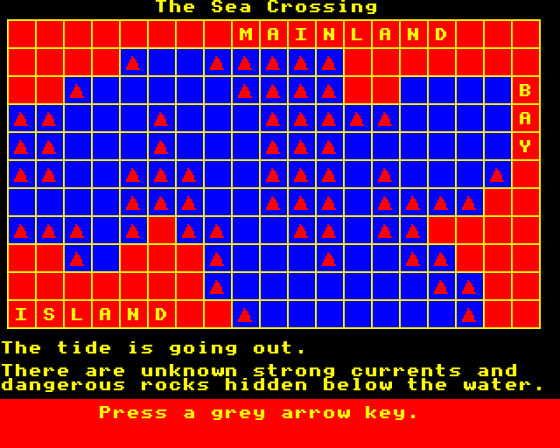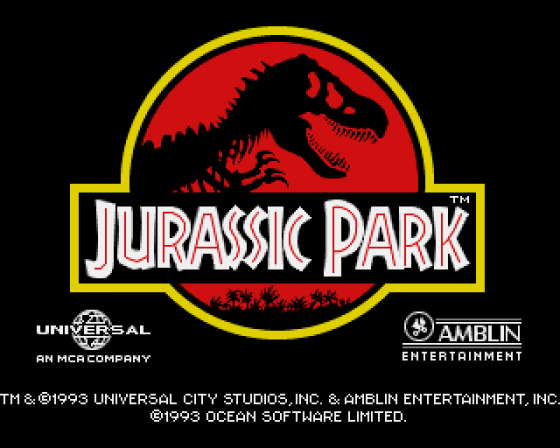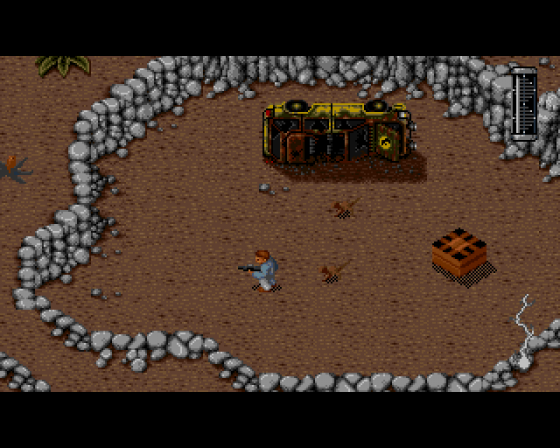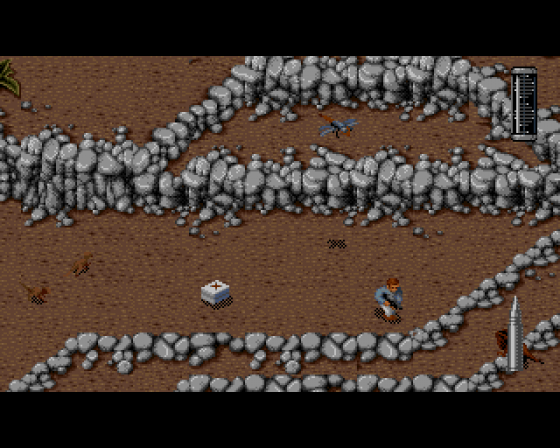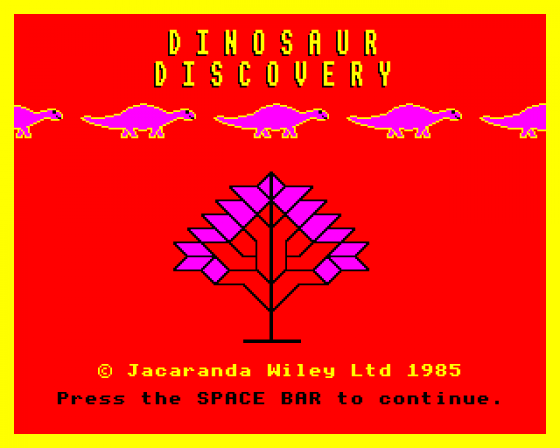




| Genre: | Unknown Genre Type |
| Publisher: | 4Mation Educational Resources Ltd |
| Cover Art Language: | English |
| Machine Compatibility: | BBC Model B, BBC Model B+, BBC Master 128 |
| Release: | Professionally released on 5.25" Disc |
| Available For: | BBC B/B+/Master 128 |
| Compatible Emulators: | BeebEm (PC (Windows)) PcBBC (PC (MS-DOS)) Model B Emulator (PC (Windows)) |
| Original Release Date: | 25th June 1984 |
| Original Release Price: | £17.99 |
| Market Valuation: | £18.68 (How Is This Calculated?) |
| Item Weight: | 318g |
| Box Type: | Cardboard Box (Decorative) |
| Author(s): | Mike Matson & Dave Smith |
Variant Items
There are 0 other items featuring this same game (that we know about!). Click any of them for their details.
Active Auctions
Closed Auctions
Buy It
Unfortunately no-one is currently selling this item.
Inner Inlay
Auction Price Watch
Worried you're being ripped off? Closing prices on eBay can help you decide what a reasonable price is for a particular item.
Full Instructions
Introduction
Dinosaur Discovery was originally published in Australia by Jacaranda Software and is the work of a team of six teachers. (Look carefully and you may well find the odd antipodean reference. It is our view that, at the time of writing, Dinosaur Discovery is the best adventure to be produced by any of our Aussie mates.
This is the first package published by 4Mation which has not been produced 'in-house' and we are pleased to be able to offer it to UK schools as it is in keeping with our philosophy concerning educational resource materials. It is our policy to publish packages which are potentially useful in activities across the curriculum but, more importantly, which may be used as a stimulus to the child's imagination. Dinosaur Discovery is such a package but, of course, it is useless on its own. It needs an enthusiastic and capable teacher to bring it to life.
This manual has been written specifically for the UK version.
We are grateful to Jacaranda Software for giving us the opportunity to publish this package.
Thanks are due, also, to Pat Fox for her assistance with the writing of this book.
Mike Matson (4MATION)
The Quest
Somewhere beneath the earth is hidden a cache of dinosaurs' eggs. Some time ago a professor discovered the eggs and was able to construct the necessary apparatus to incubate them. His first experiment was unsuccessful and, before he could make another attempt, he died tragically. Fortunately, he left a diary which gives details of his work. Having read a copy of the diary it is possible for children to locate an egg, incubate it and find themselves face to face with a baby brontosaurus. The task is not an easy one but it is certainly not impossible. By exploring the environment of the micro-world and by taking careful note of the jottings in the professor's diary they will be able to plan a successful course of action.
In a number of respects the environment being explored will not be the same for each child or group of children. Certain random elements have been built into the adventure. For example, the temperature at which a dinosaur's egg must be incubated may well vary with each quest but, by saving their quest at the end of each session, children can be assured that the conditions which they find in the environment will remain constant.
At the beginning of each quest the children find themselves in a shed containing a number of items. Each item is useful in a particular location. The shed may be re-visited at any time to make changes to the list of items being carried. When they leave the shed a map is displayed but only the part of the map in the immediate vicinity of the shed is detailed. As the children explore further afield more of the map is revealed. Indeed they are true explorers in an uncharted land.
In different parts of the environment there are tasks to be carried out, problems to be solved, and information and objects to be collected before the quest can be completed. All the necessary information is either on the screen or in the diary. The additional information and map in this book are not intended as extra aids for children although some teachers may wish to give some further assistance in special cases.
The Diary
The professor's notebook is essential to the quest as it provides substantial clues about the purpose of the quest (something which does not occur on the screen). Additionally it provides general information about the environment and clues about where things might go wrong. It will be useful for children to take note of the professor's route but, until they have explored the environment themselves, the names of the places mentioned will be meaningless. Certain facts are essential but the children will not know which facts until a later stage: they will have to keep a record of much of the information which they unearth.
A Plan Of Action
It is not the purpose of this section to list some immutable commandments but to make certain recommendations for teachers. Experienced adventurers will probably not even glance at this page but, if they do, they are invited to read the first two points.
Firstly, it is important that the teacher has explored the micro-world in order that he/she has some idea of the nature of a Dinosaur Discovery quest. This cannot be done during a coffee break (nor even a lunch break) but the Adults' Guided Tour may well make the task a little easier.
Secondly, the children's first introduction to Dinosaur Discovery should not take place in front of a screen. (This may well cause anguish for the Computer Room user.) Antarctic explorers do not usually begin their explorations by parachuting onto the polar ice cap: they have to equip themselves with warm coats and tins of beans first. If children are staring at a screen they will be itching to get started. That is fine except that they won't have any real idea of what they are supposed to be doing other than 'trying to crack another adventure'. The reading of the professor's diary is intended as a preliminary activity. When children are reading the diary (or have had it read to them) they do not even have to know that they are going to use a computer. The quest will be far more exciting if its exact nature is not revealed until the last moment but teachers who are tied to a computer users' timetable may have difficulty in concealing the fact that a micro adventure is ahead. Certainly an hour or more could be devoted to the professor's journal and its implications.
Once the children are ready to begin the computer element the organisation is at the mercy of physical conditions and individual teachers' ideas and experiences but a great deal of educational benefit will be lost if the quest becomes a computer-dominated activity only. There is plenty of scope for activities away from the keyboard and some suggestions are made elsewhere in this book.
In each Dinosaur Discovery quest success (or lack of success) depends on a number of factors.
Firstly, consideration must be given to the size and make-up of the expeditionary group. A single explorer might well find the task too great; too many could be unwieldy in terms of group dynamics and organisation. The members of the group must be prepared to pool their skills and work together to ensure that there are no careless but costly mistakes.
Secondly, all previously acquired information must be evaluated and decisions made about necessary equipment and the proposed route.
Thirdly, there needs to be a careful analysis of potentially hazardous situations and the best ways of coping with them.
Finally, the expedition needs luck.
The collection, collation and presentation of information in an appropriate format is an important aspect of the program and it is vital that children keep some sort of record of their quest. It may be decided to allow them to discover this fact for themselves in which case, initially, they may well either record everything, thus floundering in an ocean of irrelevant facts, or record too little and have to resort to guesswork. While a number of sample record sheets are provided a teacher need not feel guilty (or superior!) if he/she either produces different materials or allows children to design their own.
How much help is given to the children and how it is made available is up to the teacher. Constant failure is dispiriting but it must be remembered that Dinosaur Discovery is, above all, an exercise in problem-solving and modification of ideas is an essential element of strategy building. If care is taken in the make-up of groups and time and opportunity is given for the exchange of ideas and information, there should be little need for direct intervention.
If children are working in groups there are many benefits in terms of social inter-action and communication etc. but this depends very much on prevailing conditions and needs. The random nature of the adventure does mean that children will not be able to make too much use of other children's discoveries. One child/group's quest may differ considerably from another's in vital data.
It is useful for a teacher to have some idea of a possible course of action for a class using Dinosaur Discovery but it is not always possible to make definite plans for the duration of the project. Certainly it would be ridiculous to either continue after everyone is fed up with hatching dinosaurs or stopping before one has been incubated just because 'my forecast book must be adhered to’. Perhaps a forecast could read 'Dinosaur Discovery until further notice - timetable abandoned.'
Many teachers feel redundant, unwanted, unimportant or even neglected when their children are adventuring. What does one do when all the children are happily working at various activities and appear to regard a teacher's attention as an interruption? Perhaps the following:
- take an unobtrusive interest in what is going on
- congratulate yourself on having achieved this blissful state (because it didn't happen on its own)
- think of some inspirational ideas for various related dramatic activities
- avoid, like the plague, hovering over busy children with your red pen in hand
- think of a better set of suggestions than the ones you are currently reading.
The Locations
NB The shed is always visited first at the start of a new quest but there is no fixed order for either exploring or re-visiting the other locations. With the exception of the shed the locations are listed alphabetically in this section.
Some of the tasks are relevant to the quest in that, for example, they provide essential information or objects. The locations where such tasks are to be found are marked below *. The unmarked locations cannot necessarily be avoided, however, as they may be en route between one location and another.
1. Shed*
The following objects are available: Compass, Torch, Rope, Watch, Axe and Bag.
Any five may be taken but, initially, the children will have no idea which objects will be of use to them. They can return to the shed later to make changes to their equipment.
To leave the shed 'L' is pressed.
A word puzzle must be solved after which the explorers may move to a new part of the territory.
The puzzle takes the form of a word square on an 8X8 grid. There are five words to be found (four of them occurring at random each time). The cursor is moved around the grid with the arrow keys but cannot be moved onto wrong letters. Therefore all children will be able to find the words eventually. As each letter of the five words is found it is highlighted. A list of the words to be found is shown at the side of the grid.
2. Cliff
The cliff can only be climbed if the appropriate piece of equipment is being carried and is chosen. A word puzzle must be solved. A list of words (chosen at random) must be placed in alphabetical order. As the task is being completed a figure ascends or descends the cliff.
3. Desert*
A tombstone (that of the professor) is hidden from view in the eastern part of the desert. Only when the traveller is within 3km of the stone can it be seen. Its exact location may differ from quest to quest but will remain constant for any one quest. Written on the stone is a random sequence of letters which is required to open the combination lock on the laboratory door.
Movement through the desert is achieved by selecting a compass direction (north, south, east or west) and then a distance in km (in the range 0-9). A scale on the map allows estimates of distance to be made. To make an efficient search children need to work out a search strategy rather than wander aimlessly.
4. Forest
The forest may be negotiated only if the traveller is carrying, and chooses to use, a particular tool. A word must be decoded by analysing the example provided.
5. Hermit*
The hermit is the former fisherman who assisted the professor. He is able to offer some information relevant to the children's task but they will discover that not all his information is consistent with that which is recorded elsewhere. At some later stage the children will be able to verify the accuracy of the hermit's words.
6. Mine*
The mine cannot be explored without a particular item of equipment. The arrow keys are used to move through the maze-like mine. At any one time only that portion of the labyrinth within a short distance of the explorer can be seen.
Within the mine are crystals and eggs of different colours. Children will not know which ones to take unless they have discovered this information elsewhere. Unwanted eggs can be abandoned (with a little skill) but unwanted crystals must be removed from the mine if they are to be disposed of.
The mine does contain random sections.
7. Museum*
There is much vital information in the museum. In fact the quest is virtually impossible without it.
A number of books are presented and any of them may be selected for reading. While all the books contain relevant information only three contain information which is unavailable from other sources.
It is essential that the date is noted as this is important in calculating the safest time to cross the Straits to the island. One piece of information found here conflicts with the hermit's statements.
8. Quicksand
A word puzzle must be solved. It takes the form of a hangman (sinkman?) game. Each time a wrong letter is chosen the figure sinks further into the quicksand. Completing the word allows the figure to rise to safety. The traveller cannot move on until a word is correctly identified.
9. Snakes
Three anagrams are presented, one at a time, and must be unscrambled. As wrong letter entries are not allowed it is only a matter of time before the task is completed. Each correctly-solved puzzle removes one of the three anagram adders.
10. Swamp
A fairly complex maze must be negotiated by guiding a cursor with the arrow keys. The maze may not be quite the same for all travellers.
11. Tunnel
A randomly-drawn tunnel must be traversed by guiding the cursor with the arrow keys. A particular item of equipment is essential. The time taken to negotiate the tunnel is displayed as is the number of times the cursor comes into contact with the walls of the tunnel.
12. Wreck*
One of two items is required to gain access to a sea chart which is locked in a chest. The chart is essential if the Straits are to be crossed safely.
13. Straits*
A boat must be guided across the water by moving from square to square on a grid. Certain hazards in the form of rocks and strong currents make the journey almost impossible unless the voyager sets sail at the correct time and is equipped with a sea chart. A copy of the tide tables is available to the children inside the diary. Extra copies may be printed using the UTILITY program.
NB The tide tables are useless unless the traveller has noted the date (as shown in the museum).
14. Island*
The professor's incubator may be used to hatch an egg. Certain information is required ie the combination of the lock and the incubation temperature. Additionally, crystals and an egg of the correct colour are needed.
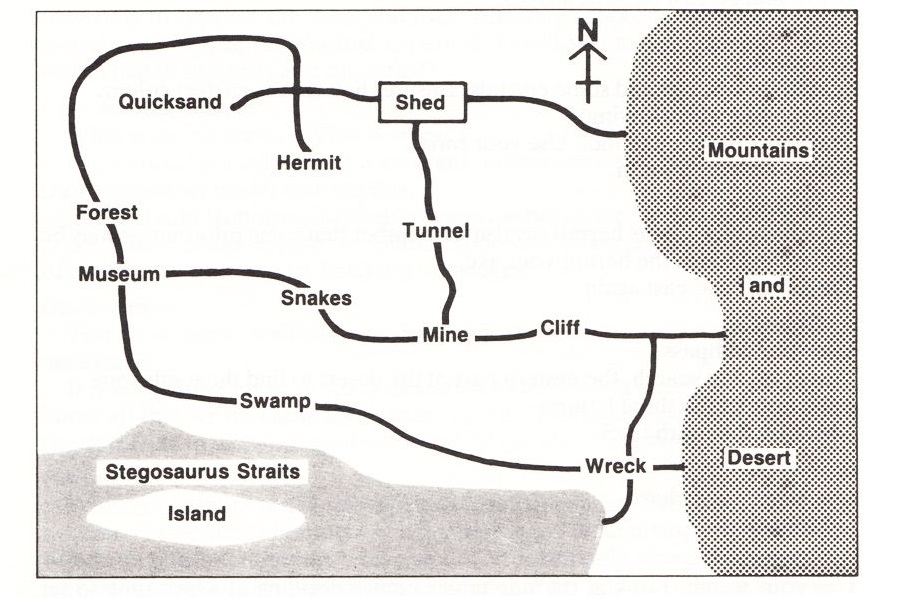 |
An Adults' Guided Tour
NB ONLY USE THIS GUIDE IF YOU REALLY DON'T HAVE THE TIME TO SOLVE ALL THE MYSTERIES YOURSELF!!
The following route is but one of many possible journeys. Do write down the information which you discover. Due to the random nature of some data it cannot be listed below.
1. Shed
Take Compass, Torch, Watch, Axe and Bag.
Leave.
Travel west then north.
Use your axe in the forest.
2. Museum
Make a note of the date and the following information:
(a) the safest time to cross the straits
(b) the incubator temperature
(c) colour of crystals
(d) colour of dinosaur eggs
Leave and go east past the snakes.
3. Mine
Use torch.
Search for one egg and some crystals.
Ensure they are the correct colour.
Use the bag when leaving.
Travel north to the tunnel.
Use your torch.
Travel west then south.
4. Hermit
Take note of what the hermit says but remember that some information may be misleading. Give the hermit your axe.
Travel east and east again.
5. Desert
Use your compass.
Travel to, and search, the eastern part of the desert to find the tombstone.
Take note of the three letters.
Leave by the south track.
6. Wreck
Use keys. Take chart.
Go south.
7. Straits
Use your watch. Look at the tide tables before deciding at which time to set sail. Beware of rocks and currents. Head for the island.
8. Island
Incubate the egg.
Ideas - By Location
Tunnel
Think of examples of different sorts of tunnels eg subways (pedestrian and railway), road tunnels, sewers, secret tunnels.
Find out about the plans for the Channel Tunnel.
Tunnelling has a long history. How were tunnels created in the past? How are they made now?
Think of examples of natural tunnels. How are caves formed? How do moles and worms make their tunnels without being buried alive?
Mine What is a mine? Is a mine always a tunnel? Are quarries and mines different things? What sorts of things are taken from mines besides coal?
Experiment by digging tunnels in sand. Comparisons could be made by preparing quantities of sand containing different amounts of moisture and finding the best mix. Initially the mixtures could be used to create towers or even sand castles using bucket moulds. The strength of these structures could be tested by placing weights on them.
Mines are supported as they are dug. Try making tunnels using various materials to support the sides and roof. Inserting supports into small tunnels would require 'ship-in-a-bottle' expertise. Could you make a machine which would install supports as it tunnelled?
Eggs and Incubators
What is an incubator? What is an egg?
Eggs must be incubated at a constant temperature etc. How do egg layers (not necessarily birds) manage this?
Make Heath Robinson incubators using the professor's machine as a starting point. These could be pictures, plans, models, or all three. If possible get hold of a real incubator and try hatching some eggs.
Dinosaurs
This is a topic well-covered by most children so few suggestions are necessary.
It is impossible for us to study dinosaurs by incubating an egg but how do we know all that we do know about these beasts? This could lead on to a study of the detective work which enables us to find out about our history.
Hermit
What is a hermit? Is it possible to be a hermit nowadays? What sort of people become (or became) hermits? Imagine that you live in a vast urban area and decide to become a hermit. Have you ever been really alone? Can you cope with being on your own? What would you do? What is the difference between a hermit and a recluse? Do people who live alone choose to be alone? Does being alone mean that one is lonely?
Straits
Design a boat which is able to detect (and avoid) submerged objects - like a car with kerb detectors.
Find out about sonar and how it is used in modern boats. Find out about the natural sonar systems of whales which enables blind-folded dolphins to find hoops with no difficulty.
If you have access to flowing water you could conduct some experiments to measure water flow and/or currents. A flow map could be drawn. Does the flow vary from time to time?
Those who live near tidal waters could take measurements and compare them with published tide tables.
What causes tides? How can tides be useful to us?
Desert
What is a desert? Are all deserts hot and sandy places? Are there frozen deserts? How do people survive in arid areas? Could deserts be made fertile? Where are the desert regions of the world?
Cliff
Do cliffs occur only at the coast? What causes cliffs? Are there different sorts of cliff?
Experiments with sand and/or other materials could be conducted to investigate the erosive effect of water. It may be possible to create a soil profile nearby (by digging into a bank) and observe the effects of weathering over a period of time.
Which creatures make their homes on or in cliffs?
Wreck
Visiting a shipwreck may not be possible but a visit to see wrecked cars can be an unusual (and educational) expedition. Vehicle scrap yards tend to be messy places so perhaps the summer term would be the best time for a visit. There are many artistic possibilities - and you might be able to come away with some suitable raw materials. It is difficult to be poetically uninspired when surrounded by the decayed artefacts of our technological civilisation.
Find out how wrecks, ruins and other remains help us to find out about the past (see the section on Dinosaurs). Imagine that you are from the future. Make a 20th Century rubbish collection and draw conclusions about the nature of civilisation at that time.
Swamp and Quicksand
Most children are fascinated by boggy places. It may be possible to find out why. What are the differences between a bog, mire, swamp, quicksand, morass and quagmire?
Make a list of sludgy words.
Which creatures (other than children) enjoy the wetlands?
Forest
Perhaps the next most common topic after dinosaurs and water. Try thinking of something original. (I can't.)
Museum
There are many types of museum from warfare to agriculture. There may be a museum within travelling distance in which case it would be useful to find out how museums obtain their exhibits and whether all their treasures are on display.
Children could make their own museums housing displays of objects as well as writings and illustrations.
Why not make a museum of the future (see the section on Wrecks).
Language
Dinosaur Discovery was originally intended to be a Language Adventure and, therefore, contains a number of specific language activities:
Wordsearch - Shed
Alphabetical Order - Cliff
Codes - Forest
Hangman - Quicksand
Anagrams - Snakes
These activities are intended to be 'fun' exercises which reinforce various skills and provide the children with some measure of success when they fail to complete the whole program. They are not too demanding and it is the problem-solving skills which remain the main criteria for success. The activities are particularly appealing to the child with language problems and can stimulate a range of complimentary activities away from the micro.
Do look at the section on Drama (even if you have no intention of indulging in such nonsense) as many of the ideas listed could be used, or adapted, for language work.
Oral Work
The format of 'Dinosaur Discovery' lends itself to groupwork and the establishment of a controlled environment in which a host of socio-linguistic skills can be initiated and reinforced. Individuals can be encouraged to offer opinions or listen to others, recognise their own skills and welcome expertise in others, share knowledge and experience and co-operate with others to achieve a mutual goal. Opportunities arise for the introduction of the concepts of negotiation, corporate responsibility and consensus and majority decisionmaking. The group situation allows one to externalise one's thinking which helps in the evaluation of ideas and enables others (including the teacher) to assist in the fostering of efficient problem-solving skills such as the formation and modification of hypotheses.
Dinosaur Discovery presents a number of topics suitable for group or class discussion. Here are a few suggestions which could easily lead to role-play or written activities.
1. Why do certain people choose to either live in isolation like the hermit or take on dangerous missions single-handed like the scientist? What characteristics do such people tend to have? Could the children envisage themselves in similar situations? How would they feel when difficulties arose?
2. Why do people write diaries?
Are there different kinds of diaries?
Do any of the children write diaries? If so, why?
3. How did the various groups playing Dinosaur Discovery make decisions? What are the problems inherent in corporate decision-making?
What other ways of making decisions are there?
Writing Activities
The development of language skills largely depends upon the provision of sufficient opportunities for the children to experience and use language in a variety of contexts. Dinosaur Discovery can be the starting point for a host of different kinds of writing including personal writing, descriptive prose and poetry, factual accounts, instructions and story writing.
Diaries and Log Books
This is a good opportunity to look at all kinds of journal and compare the reasons for writing them and the type of information that each contains.
Log books are factual recordings of day to day accounts of events and conditions.
It is possible to put together a collection of log books from different places and compare the contents.
The children are fascinated by school logs, the older the better, and a great deal of social history can be gleaned from them.
The logs of ships or aircraft are another useful resource and provide an effective stimulus for creative writing. Many famous diaries exist eg the diary of Anne Frank, Scott's account of the Antarctic Expedition and this might be an appropriate time to introduce the children to them.
There are other documents, related in that they are records. Bank statements, tachograph and sunshine recording sheets are a special type of document produced by machines.
Pen Portraits
Although little direct information is given about the scientist and the hermit it is possible to make several assumptions about their personalities and build up quite extensive character studies. They appear to be quite eccentric, a trait which children find fascinating, and could provide the introduction to a gallery of pen portraits.
Story Writing
The locations on the map are exciting and dangerous and provide ideal settings for descriptive writing and adventure stories.
Both activities can be extended and reinforced through oral work and drama.
Explanatory Writing
Children find it quite difficult to describe a process in either the spoken or written form. The incubator which is displayed at the end of the program is a very attractive machine. The children will willingly try to explain how the egg is hatched and will be keen to design their own machines and processes. It is quite useful for them to have to describe even simple everyday processes in terms which can be easily understood (by extra-terrestrials) eg making beds and washing up.
Drama
The situations and locations that stimulate creative writing can also be used for drama. Each activity supports and extends the other. In fact several of the ideas listed in the Language section could be used as a starting point in drama sessions. Some more 'dramatic' suggestions follow.
Dinosaur Dramatics
- Imagine you are a dinosaur embryo. It is time for you to hatch. Remember that everything you see, feel, hear, smell or taste will be completely new to you. You know nothing. You will be a real explorer.
- Be a baby dinosaur's parent teaching your young one the 'tricks of the trade'.
- Some dinosaurs (like gorillas) are huge vegetarian beasties. Try to persuade a carnivorous 'friend' to eat leaves (without becoming its dinner).
- The dinosaurs became extinct. Think of causes and re-enact the last days of the giant reptiles.
- Create a dinosaur's dance sequence. Bulk does not necessarily equate with clumsiness.
- Dramatise a story about a baby dinosaur which is able to hatch from an egg today. Think of situations in which its life would be endangered and how you could protect it.
- There is reputed to be a family of dinosaurs still surviving in the Congo. Take part in an expedition to find and film one.
- Imagine that you have taken a photograph of a dinosaur but lost the camera. Try to persaude a newspaper that you are telling the truth. People Performances
- The professor's incubator is a fantastic machine. Using yourselves as mechanical parts make a wonderfully-synchronised machine. Some rhythmic music might help and enhance.
- When the mine is being explored only small parts can be seen in the light of your torch. Create the mine. Children could lie on the floor until the explorer comes close when they leap into action and become tunnels, stalagmites, boulders and beasties.
- Explore each other's bodies. (To avoid being featured in the Sunday papers certain rules may be necessary such as 'no touching'.)
- Explore the school, playground or classroom imagining that you are from another world.
- Pretend that you have been a hermit for many years. Your hermitage becomes the site for a hypermarket.
- Having been a hermit for so long that you have forgotten how to talk how would you communicate with a surprise visitor?
- Make an amazing discovery and be interviewed on television.
- Make an amazing invention and try to thwart the attempts at piracy by rivals.
- Have problems with a swamp, desert, mine shaft, ocean current or shed.
- Create a landscape using bodies to represent the various features. Climatic and seasonal changes could be added later.
- Simulate a computer adventure with objects to be carried, locations to be visited and characters to meet.
- Dramatise the complete story of the Dinosaur Discovery.
- Very little time is spent in the Forest with its magic creepers. Create a strange forest with lots of other unusual attributes.
- Sheds are traditional places for children's dens. Imagine a secret hiding place behind the flower pots and hold club meetings.
- Perform a cliff rescue having first discovered how it is done. (An ideal opportunity to find out about making emergency calls etc.)
- Create and deal with other accidents which might occur. Imagine what sensible things you would do if disaster befell you. Eg shutting a finger in the shed door, falling down a mine shaft, getting lost in a forest or being trodden on by a dinosaur.
Other Ideas
Art, Craft and Design
Some suggestions:
1. Boats. Make a variety of models based on the real thing, historical designs or imagination. Make boats which work using wind power or their own power source such as rubber bands. Boats with working oars would be a real challenge.
2. A variety of machines can be designed, illustrated and constructed. Some examples are:
a) a cable car system to deliver important messages across the room or blunt pencils to the pencil-sharpening department
b) a lift to raise unfit teachers up cliffs
c) a device to remove all the sand from the desert
d) a self-assembling shed
e) a dinosaur trap
f) a swamp drier
g) a forest clearer
3. Construct a scale model of the Dinosaur Discovery landscape with different groups being responsible for different areas.
4. Produce posters publicising various parts of the adventure land.
5. Create cartoon flick books showing the emergence of a baby dinosaur from its egg.
6. Paint miniature pictures on egg shells.
7. Create own islands and develop them commercially.
8. Make dinosaur, hermit and professor puppets.
9. Find the best way of making a swamp.
10. Make classroom grottos to represent some of the adventure locations.
11. Make a section of the mine with eggs and crystals. Make it big enough to walk through.
12. Construct mazes with some walls which can be moved to create new pathways. Invent games which can be played with the finished product.
13. Make replicas of dinosaur fossils.
14. Produce a large-scale model of a dinosaur skeleton.
15. Design and construct a model which is able to simulate tides and currents.
16. Construct water-powered devices eg using water wheels.
Mathematics
Combinations
In the adventure it is necessary to find a 3 character combination to unlock the laboratory door. How many possible combinations are there?
The program in Appendix C could be useful in demonstrating combinations. Three letters are asked for. The computer then runs through possible combinations until it arrives at the one selected. It will be noted that the TIME shown gives values below 100 to one decimal place. There are a number of activities which could be undertaken with this program.
a) Observe how the computer searches for and finds the combination. In how many other ways could the same task be accomplished? Would all the methods take the same length of time?
b) Which combination would take the greatest length of time to find?
c) How many possible combinations are there?
d) Which combination would be found first, AMZ or ZMA? Why?
e) If it takes 1.1 seconds to find AHH how long would it take to find BHH?
f) What differences would there be if numerals were used instead of, or in addition to, letters?
Children could look for other examples where characters appear in windows eg tills and petrol pumps or where combination codes are required eg PIN numbers for banks' money dispensers.
They could examine small combination locks and calculate how long it might take to find the correct combination.
Codes
There are simple code examples to be solved in the Forest section of the program. Children love codes, perhaps because there are secrets to be revealed. They could write to each other in code and develop more sophisticated techniques. Those who are familiar with computer programming might be able to write a coding/decoding program (perhaps using the one in Appendix D as a starting point).
There are other examples of codes such as morse and semaphore. Why are the contents of computer programs (eg BASIC or machine code) referred to as code?
The program in Appendix D provides a simple tool for creating coded messages. A 'shift' value is asked for. If the shift value was 2 then 'A’ would become 'C'. As upper-case text is typed in the coded version appears underneath. To de-code a coded message the new shift value would be 26-old shift value.
Example: With a shift value of 3 APPLE becomes DSSOH.
With a shift value of 23 DSSOH becomes APPLE.
Making Use of Data
The tunnel sequence in the adventure records the number of collisions and the time taken to negotiate the course. It is possible to go through the tunnel time after time and keep a record of the results which could then be presented in, for example, graph form. Some conclusions could be made concerning the results but it must be remembered that as the tunnel is randomised it may sometimes require more time. Similar data could be supplied by children's continuing efforts to negotiate the tunnel. Do they become faster? Is their path more economical after ten attempts?
The tide tables can make an interesting study. Do the times of high tide form a pattern? Real tide tables could be obtained and comparisons made. Is it possible to make a companion list of the times of low tide? How long is it before the times begin to repeat? Are the differences in tide times between two places constant?
Maps, Scales and Grids
In the desert journeys are made by reference to a scale. It is possible to work out the length of a journey around the foot of the mountains or the shortest journey to the eastern edge of the desert. A more difficult task would be to find the most efficient method of traversing the eastern part of the desert in the search for the tombstone. As the stone is visible only when the searcher is within 3km transect lines need to be a minimum distance apart. Is this distance 3km, 6km or another value?
A scale map of the desert (and other locations) could be drawn taking measurements from the screen. In a similar way the baby dinosaur could be drawn out-of-doors on a very large scale by taking screen measurements or covering the screen with a transparent grid and tracing the animal.
The grid over the Straits could be used as an introduction to grids and co-ordinates on real maps.
Other Ideas
Make geometric models to represent crystals.
Calculate how many dinosaurs could sleep in the school hall or how many dinosaurs, nose to tail, would be needed to stretch to the secretary's office.
Teach a Turtle to negotiate a maze. Give blindfolded children LOGO commands to enable them to locate a hidden treasure.
Science
Many of the activities suggested elsewhere have connections with science but the following are more specific areas.
- Find out how sailors, birds and whales navigate. How did someone manage to find Australia all those years ago? How do Jumbo pilots manage to find it now?
- Following ocean currents is not a very practical activity but there are many instances of people and animals making use of them. What causes currents in seas, oceans and rivers?
- Crystals can be made fairly easily in the classroom.
- We know much about extinct animals not only from their fossilised remains but from the imprints they made. Children could produce their own fossils by making plaster casts of birds' and animals' (and each others') footprints or the imprints made by other anatomical parts.
- How do reptiles differ from mammals? Is a reptile's egg similar to a bird's egg? Do any mammals lay eggs? Which creatures are most like dinosaurs?
- Swamps, marshes and bogs are capable of holding vast amounts of water. Design some experiments to measure and compare the water-holding capacity of certain materials such as synthetic sponge, sand, soil, newspaper and paper towels. Perform 'wet strength' tests on different brands of paper tissues.
- Deserts support only specialised vegetation. Undertake some experiments to find the moisture needs of different plants. Find a way of discovering the water content of a lettuce leaf.
- Stalactites and stalagmites form in caves. How? Is it possible to make some? Try squeezing wet sand (of just the right constituency) to make stalagmite models. What do kettles and caves have in common?
- Design and test some experimental shoes for crossing quicksand. (Simulation only.)
- Find out how snakes manage to move about.
- Design and build a device to raise sunken vessels.
Technical Section
Loading Dinosaur Discovery
- Ensure the computer, monitor and disc drive are connected correctly.
- Switch on.
- Insert disc in drive.
- Hold down SHIFT. Press BREAK. Release BREAK. Release SHIFT.
- Follow the instructions on the screen.
In the event of nothing happening try again. Saving a Quest At any stage a quest may be saved to disc by pressing ESCAPE. It is important that no attempt is made to save a quest on the program disc. (The security of the program disc may be ensured by keeping the write-protect tab in place.)
A separate (previously formatted) disc should be retained for Dinosaur quests. Suitable disc labels are provided.
As soon as ESCAPE is pressed a SAVING program runs. It is necessary to give the quest a name (up to 7 alpha-numeric characters in length). Individual children or groups should have their own quest name. If they are saving a quest for a second or subsequent time they may use the same name but this will over-write all previously-saved data. It is important that children (a) remember their quest name and (b) do not use other childrens' quest names.
Where a single disc drive is being used to save a quest the program disc will need to be replace by the SAVED QUESTS disc. Instructions are given on the screen. Once a quest has been saved the program disc must be placed back in the drive if the program is to be used again. Similarly, when a previously-saved quest is being loaded the discs will need to be replaced
Dual disc drive users may use drive 0 for the program disc and drive 1 for the SAVED QUESTS disc but only if all quest names begin with an asterisk. For example: if a quest is given the name DINO it will be saved/loaded using drive 0 but if it is called *DINO then drive 1 will be used.
NB
- The best time to save a quest is when the map is on the screen.
- Once a quest has been saved it will be necessary to re-boot the program if it is to be used again.
- To find out the names of saved quests type: *CAT and press RETURN
Erasing Old Quests
From time to time it may be necessary to remove saved quests from a disc. There are three simple methods (assuming the appropriate disc is in the drive):
- to remove ALL quests simply format the disc. If there are few quests on the disc use method c.
-
to remove one quest at a time type
*DELETE [questname] and press RETURN eg to remove a quest called DINO type *DELETE DINO -
to remove several quests type
*WIPE*.* and press RETURN
The quests will be listed, one at a time, and you type 'Y' to delete or 'N' to retain each one.
Sound Option
Soon after the program has been loaded it is possible to choose the level of sound required.
The Utility Program
This program will print a copy of the tide tables (or allow the tables to be viewed on the screen.)
Insert the main program disc in the drive. Type: CHAIN "UTILITY" and press RETURN (CH. "UTILITY" will suffice)
If the printer option is selected ensure that your printer is connected and switched on.
Appendix A: Word Puzzles
The following words are used in the four word puzzles. All the words are relevant to the adventure. They are listed alphabetically. At the end is a single list of all the words. Each puzzle selects words at random from its list.
Shed (38 words)
BOAT, BOOKS, CARVE, CHART, COMPASS, CRYSTAL, DESERT, DIARY, DOWN, FOSSIL, HERMIT, ISLAND, KEYS, MAPS, MINE, MUSEUM, NAME, NOON, NORTH, OPEN, PATH, REEF, ROAD, ROPE, SHAFT, SHED, SHIP, STRAITS, SWAMP, TIDE, TRACK, TREE, TORCH, TUNNEL, UNDER, WATCH, WATER, WRECK.
Cliff (35 words)
BOAT, BOOKS, CHART, COMPASS, CRYSTAL, DESERT, DIARY, DOWN, FOSSIL, HERMIT, ISLAND, KEYS, MAPS, MINE, MOUNTAIN, MUSEUM, NAME, NOON, NORTH, OPEN, REEF, ROAD, ROPE, SHED, SHIP, SWAMP, TIDE, TORCH, TRACK, TREES, TUNNEL, UNDER, WATCH, WATER, WRECK.
Forest (35 words)
ANCHOR, BOAT, BONES, CHART, COMPASS, CRYSTAL, DESERT, DIARY, DOWN, FOSSIL, HERMIT, ISLAND, KEYS, MAPS, MINE, MUSEUM, NAME, NOON, NORTH, OPEN, RAFT, REEF, ROAD, ROPE, SHED, SHIP, SWAMP, TIDE, TORCH, TRACK, TUNNEL, UNDER, WATCH, WATER, WRECK.
Quicksand (25 words)
BOOKS, CARVE, CHART, CLIFF, COMPASS, CRYSTAL, DESERT, EXPLORE, FOREST, HERMIT, ISLAND, MACHINE, MINING, MOUNTAIN, MUSEUM, PATH, SNAKES, SWAMP, TOMBSTONE, TRACK, TREE, TUNNEL, VIOLET, WRECK, YELLOW.
Snakes (33 words)
AXES, BOAT, BOOK, CARVED, CHART, COMPASS, CRYSTAL, DATE, DESERT, DIARY, DOOR, DOWN, EGGS, FOSSIL, HERMIT ISLAND, KEYS, MINE, MUSEUM, OPEN, PATCH, ROAD, SHAFT, SHED, SOUTH, SWAMP, TORCH, TRACK, TUNNEL, UNDER, WATCH, WATER, WRECK.
The Complete List (58 words)
ANCHOR, AXES, BOAT, BOOK, BOOKS, BONES, CARVE, CARVED, CHART, CLIFF, COMPASS, CRYSTAL, DATE, DESERT, DIARY, DOOR, DOWN, EGGS, EXPLORE, FOREST, FOSSIL, HERMIT, ISLAND, KEYS, MACHINE, MAPS, MINE, MINING, MOUNTAIN, MUSEUM, NAME, NOON, NORTH, OPEN, PATH, RAFT, REEF, ROAD, ROPE, SHAFT, SHED, SHIP, SNAKES, SOUTH, STRAITS, SWAMP, TIDE, TOMBSTONE, TORCH, TRACK, TREE, TUNNEL, UNDER, VIOLET, WATCH, WATER, WRECK, YELLOW.
Appendix B: Letter Frequency Program
This program was designed for use in conjunction with text produced by a word processor. Any text which is in the form of an ASCII file may be loaded into the program. To check whether or not a text file is suitable type:
*TYPE [filename]
If the text appears on the screen the file may be used with this program.
Type the program ensuring that every space, !, ?, and & is correct. All odd-numbered lines (beginning with a colon) may be left out. Save the program before running. Type:
SAVE "FREQ" and press RETURN.
Once the program has been saved you may load and run it. Type:
CHAIN "FREQ" and press RETURN.
When "Text name?' appears type the name of the text file and press RETURN having first ensured that the disc containing the text file has been insterted in the drive.
The text will appear on the screen. If the text fills the screen press SHIFT to scroll the text. Continue until Press SPACE' appears. Press the SPACE bar and the program will display the frequency of each character and the total number of characters in the text. The figure following 'Z' refers to spaces.
The program is written in a simple form and may easily be enhanced eg by adding colour.
NB Line 155 will cause 'returns' in the text to start a new line if the line is re-written leaving out :REM)
The program will not produce accurate results with text files containing more than about 3000 characters ie three screens of text.
10 MODE7
20 VDU 14
30 INPUT "Text name?" A$
35 :
37 REM find length of text file and load it to address &7000
39 :
40 $&900=A$
50 ?&A00=0:?&A01=&9:!&A02=&3000:?&A06=0
60 X%=0:Y%=&A:A%=5:CALL &FFDD
70 !&A02=&3000:?&A06=0
80 A%=&FF:CALL &FFDD
85 :
87 REM reserve memory for frequency figures
89 :
90 DIM C 26
99 :
100 CLS
105 :
107 REM print text and calculate frequency of letters
109 :
110 FOR I%=0 TO 26:C?I%=0:NEXT
120 FOR U%=&3000 TO &2FFF+!&A0A AND &FFFF
130 IF ?U%>64 AND ?U%<91 C?(?U%-65)=C?(?U%-65)+1:VDU?U%
140 IF ?U%>96 AND ?U%<123 C?(?U%-97)=C?(?U%-97)+1:VDU?U%
150 IF ?U%=32 OR ?U%=13 C?26=C?26+1:VDU32
155 REM IF ?U%=13 PRINT
160 NEXT
169 :
170 PRINT''"Press SPACE"
180 REPEAT UNTIL GET=32:CLS
190 PRINTTAB(10,2)"LETTER FREQUENCY"
195 :
197 REM display frequency figures
199 :
200 a%=0:B%=0
210 FOR Y%=6 TO 13 STEP 3
220 FOR I%=B% TO B%+8
230 PRINTTAB(I%MOD9*4+2,Y%)CHR%(I%+65)CHR$10CHR$8C?I%
240 NEXT
250 B%=I%
260 NEXT
270 VDU31,34,12,255:T%=0
280 FORI%=0TO26
290 T%=T%+C?I%
300 NEXT
310 PRINTTAB(13,18)"Total "T%
Appendix C: Combinations Program
See Appendix B for information on typing and saving a program.
10 REPEAT
20 MODE7
30 VDU23;11,0;0;0;0;
40 PRINT"COMBINATIONS"'
50 PRINT
59 :
60 DIM N%3
70 FOR T%=1 TO 3
80 PRINT'"Letter ";T%;"? ";
90 REPEAT:A=GET:A=A OR 32-32:UNTIL A>64 AND A<91
100 N%?T%=A
110 PRINT CHR$ A
120 NEXT
129 :
130 CLS
140 @%=&305
150 PRINT "COMBINATION CHOSEN:";
160 TIME=0
170 FOR T%=1 TO 3
180 PRINT CHR$(N%?T%);" ";
190 NEXT
200 PRINTTAB(12,16)"TIME (secs)"
209 :
210 FOR A%=65 TO N%?1
220 FOR B%=65 TO N%?2
230 FOR C%=65 TO N%?3
240 PRINTTAB(14,10) CHR$A%
250 PRINTTAB(18,10) CHR$B%
260 PRINTTAB(22,10) CHR$C%
270 T%=TIME/10
280 PRINTTAB(24,16)T%/10 SPC2
290 NEXT:NEXT:NEXT
299 :
300 PRINTTAB(5,25)"Press SPACE for another go"
310 REPEAT UNTIL GET=32
320 RUN
Appendix D: Code Program
See Appendix B for information on typing and saving a program.
10 MODE 7
20 count=0
30 INPUT"Shift (1-25)?"shift
40 CLS
50 PRINT"Shift=";shift
60 PRINT'"Type text. Press RETURN to finish."
69 :
70 REPEAT
80 REPEAT
90 char=GET
100 UNTIL char=32 OR char=13 OR char>64 AND char<91
110 IF count MOD 40=0 VDU 10,10
120 PRINT CHR$ char;
130 IF char>(90-shift) char=char-26
140 code=char+shift
150 IF char=32 code=32
160 IF char=13 GOTO 210
170 VDU 10,8
180 PRINT CHR$ code;
190 VDU 11
200 count=count+1
210 UNTIL char=13
219 :
220 PRINT'''"Press SPACE to start again."
230 REPEAT UNTIL GET=32
240 RUN
Notes:
1. The program accepts upper case letters only. A modification would be needed if numerals and/or lower case letters were to be accepted.
2. The variable 'count is used to start a new line, 'char' is the character typed, 'code' is the new coded character, 'shift' is the difference in the number of characters between the typed letter and the coded letter.
3. ASCII Codes:
Letters A-Z have values in the range 65-90.
The ASCII value of a space is 32 while that of RETURN is 13.
To find the ASCII value of 'a' type:
PRINT ASC "a" and press RETURN
Package Contents
- a disc containing the Dinosaur Discovery program and the UTILITY program.
- the Teachers' Manual
- two copies of the Diary
- a set of master sheets for photo-copying purposes
- a set of labels for saved quests discs
Screen Designers
The following utilities are also available to allow you to edit the supplied screens of this game:
Cheats
Download
A digital version of this item can be downloaded right here at Everygamegoing (All our downloads are in .zip format).
| Download | What It Contains |
|---|---|
| A digital version of Dinosaur Discovery suitable for BeebEm (PC (Windows)), PcBBC (PC (MS-DOS)), Model B Emulator (PC (Windows)) |
Games Like Dinosaur Discovery
Report A Problem
We thank you from the bottom of our hearts if you report something wrong on our site. It's the only way we can fix any problems!
You are not currently logged in so your report will be anonymous.
Add Note
Release Country
Change the country to update it. Click outside of this pop-up to cancel.
Scan Of Selected Article
If you auction an item, it will no longer show in the regular shop section of the site.






